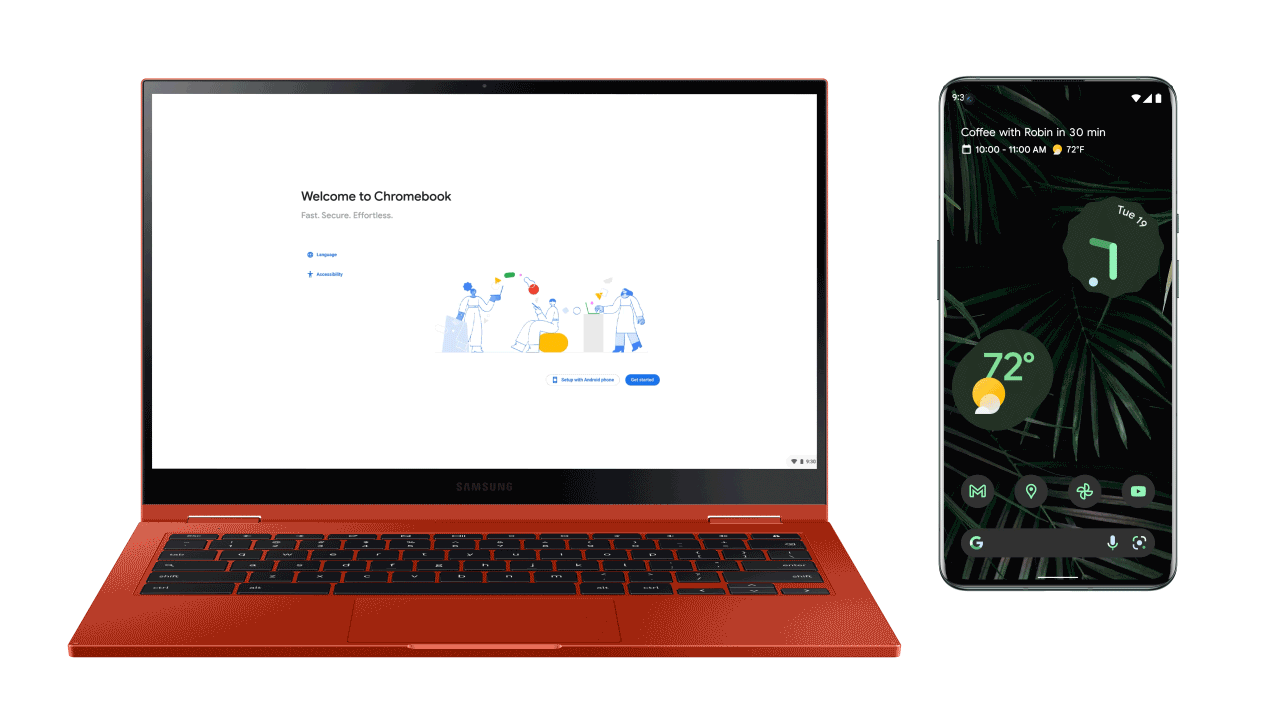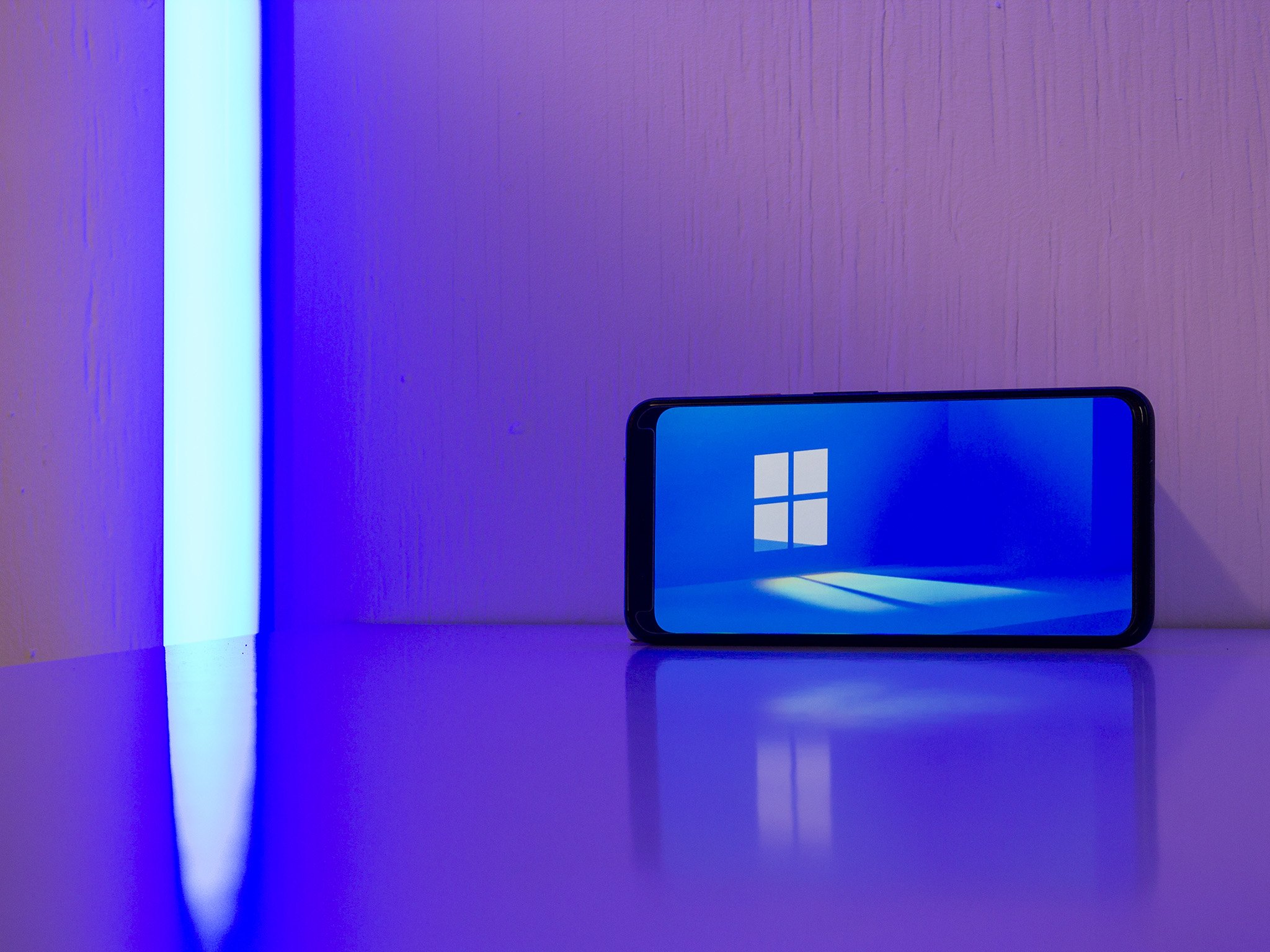Google builds out Fast Pair and Windows integration, but we want more
The new features announced at CES 2022 are a good start, but why can't we have Fast Pair and Nearby Share on every device?
Whether it's iMessage integration in macOS, quick file sharing via AirDrop, or the instant pairing of AirPods, the advantages of buying into Apple's ecosystem across multiple device categories are clear. Yet despite Google's dominance in mobile around the world and the growing popularity of Chromebooks and Android TV, the company hasn't been able to offer as seamless an experience when using all these devices alongside each other.
That's about to change in 2022, as Google looks to make the disparate parts of its ecosystem work better together - and to integrate more closely with Windows offer Apple-like functionality between phone and computer.

At CES 2022 earlier this month, Google announced a raft of new features designed to plug this vital ecosystem gap, with the main focus on Android and fast pairing. The new features are far-reaching: Everything from automatic sign-in on new Chromebooks, with a Chromecast-style setup process via your Android phone, to instant setup of Matter smart home devices from your Android handset.
While features like Message and notification sync on Chromebooks has been a thing for a while, Google's ecosystem endeavors for 2022 are far more ambitious than we've previously seen. They take aim at two major categories of pain points - setting up new gadgets and sharing between devices you own.
Apple-like interoperability between Google gadgets is finally starting to happen.
Google Fast Pair will arrive on Chromebooks and Google TV later this year, liberating more devices from the tedium of manual Bluetooth pairing. And the arcane combinations of button presses and power cycles involved in setting up new smart lighting will be done away with thanks to closer integration between Android phones and Matter gadgets.
If you're like me, though, the most exciting addition might be the arrival of Nearby Share support on Windows PCs, eliminating a major frustration that doesn't exist in the Apple ecosystem.
My enthusiasm around the Nearby Share on Windows is tempered by the fact that it'll only be supported on PCs from a limited number of manufacturers, at least initially. Nevertheless, all of these announcements show Google making big moves towards a world where, if you own Android or Google-powered gadgets, they can work together with minimal friction.

Making everything "just work" with everything else won't be simple, nor will it happen overnight. Apple, with the tight control it enjoys over its entire range of products, retains an advantage in the pace it builds out new ways for its gadgets to interact. But the breadth of features planned for Windows in particular - fast pairing of audio gear, message sync and file sharing - is impressive, and you have to imagine it's a case of when and not if this is opened up to any capable PC.
It's also interesting to see further blurring of lines between Android and Windows, following the arrival of Android apps on Windows 11 this past year.
One possible reason Google won't support every PC at launch is that getting this stuff right is hard. For example, a look at Microsoft's Your Phone Companion app, which serves many of the same call, message and photo-sharing functions, reveals mixed reviews and a recent string of negative scores from frustrated users.
Slow and steadyGetting this stuff right is hard, which is why Google is going slow.
Google has a potential advantage just based on the fact that it's even thinking about competing platforms like Windows, though. So could macOS be next in line? Obviously, there's no way Apple would ever build this kind of functionality into its OS. But a third-party app from Google could easily achieve the same results, enabling Fast Pair and Nearby Share for the many people who use an Android phone with an Apple machine.
The current solution for juggling files between Android and Mac is the (extremely bad) Android File Transfer app, last updated in 2018. If you've used it, you probably already know how flaky this app is, especially if you're using an Android phone that's not a Google Pixel. A replacement is long overdue, and the excellent Google Drive app for macOS shows that it's perfectly capable of building apps that integrate natively into the Mac experience.
If the ecosystem wars of the last decade were about owning particular device categories - like mobile, desktop, or tablet - the battlefield for the next decade could center around owning the conduits that all those different categories of device use to interact as a sort of "soft power" over rival platforms.
With the latest expansion to Nearby Share, Fast Pair, and Matter support, Google is well on its way to doing just that.
